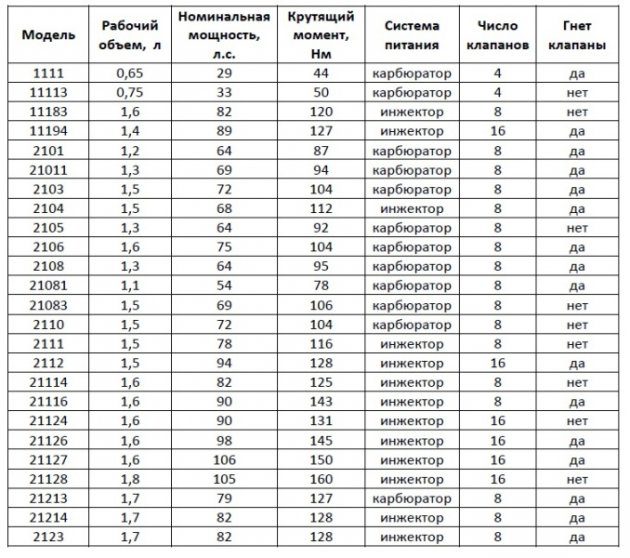
On which VAZ engine bends the valve
Many car owners are interested in this question, on which cars, or rather engines, does the valve bend when the timing belt breaks? Remembering these engine modifications is not that difficult.
Let's start in order. When the first VAZ 2110 cars appeared, 8-valve engines were installed on them, with a volume of 1,5 and then a volume of 1,6 liters. On such engines, in the event of a belt break, the valve did not bend, since the pistons did not meet the valves.
A little later, in the tenth VAZ family, a VAZ 2112 car with a 16-valve 1,5-liter engine appeared. This is where the first problems began for the first owners of these cars. The design of the engine has changed quite a bit, thanks to the 16-valve head, and the power of such an engine has increased from 76 horsepower to 92 hp. But in addition to the advantages of such an engine, there were also disadvantages. Namely, when the timing belt breaks on such engines, the pistons met with the valves, as a result of which the valve bent. And after all this, the owners of cars with such engines were waiting for expensive repairs, which would have to spend at least 10 rubles.
The reason for such a breakdown as bent valves is in the design of the 1,5 16-valve engine: in such motors, the pistons do not have recesses for the valves, as a result of which, when the belt breaks, the pistons hit the valves and the valves are bent.
A little later, on the same VAZ 2112 cars, new 16-valve engines with a volume of 1,6 liters began to be installed. The design of such engines was not much different from the previous ones with a volume of 1,5 liters, but there is one important difference. In the new engine, the pistons are already installed with grooves, thus, if the timing belt breaks, the pistons will no longer meet with the valves, which means that expensive repairs can be avoided.
Several years have passed, and domestic motorists are already accustomed to the fact that 16-valve engines have become reliable, so to speak, injury-safe in relation to valves. But a new car came off the assembly line, one might say an updated ten Lada Priora. All the owners thought that since the Priors had a 16-liter 1,6-valve engine, the valve would not bend. But as practice has shown, in cases of a broken timing belt on the Lada Priore, the valves meet the pistons and bend them. And repairs on such engines will be much more expensive than on the “twelfth” engines. Of course, the likelihood that the belt will break on the Priore is not high, since the timing belt is almost twice as wide as on the “twelfth” engines. But, if you come across a defective belt, then the probability of a belt break increases significantly and it is simply impossible to know when a break occurs.
Also, on new engines that are installed on Lada Kalina: 1,4 16-valves, there is also the same problem, when the belt breaks, expensive repairs cannot be avoided. So, you need to constantly monitor the condition of the timing belt.
You should also not rely on the fact that if you have a safe engine, that the valves on such an engine will not bend. If there is a large layer of carbon deposits on the pistons and valves, then in some cases valve bending is possible on such engines as well. Also, you constantly need to monitor the condition of the timing belt, check for chips, cracks, threads and delamination. All these signs indicate that you need to change the belt immediately. It is better to spend 1500 rubles than to give at least ten times more. And do not forget about replacing the rollers, it is advisable to change them at least every second timing belt replacement.

One comment
Tosha
Does the valve bend on the Lada Largus? It is interesting to know, I want to buy, but only if the valves are in the “plugless” version